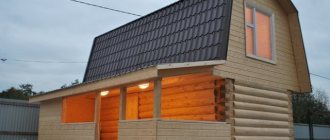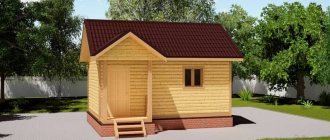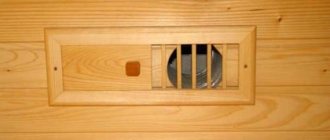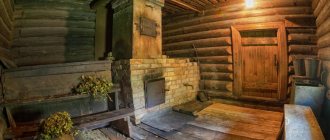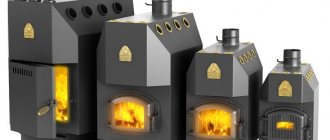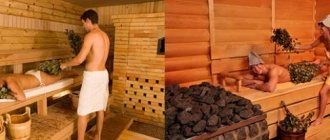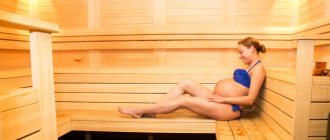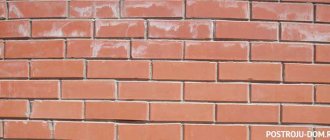The modern, fast and fashionable pace of life is the desire to stand out and be different from others. According to piercing wearers, it gives a person inner freedom, liberated behavior, and emphasizes his sexuality.
The piercing procedure is far from new; the practice of decorating the body by piercing various areas of the skin was practiced by the ancient Bedouins and Egyptians.
Piercing the nose and wearing jewelry in the left nostril is a distinctive sign of ancient and modern India. Piercing has deep historical roots and history.
Piercing is a medical, invasive procedure that involves penetration through the skin, mucous membranes, that is, through the natural external barriers of the human body.
About piercing
Sometimes people are so into piercings that they look creepy. And the procedure itself is far from harmless; it is always accompanied by one or another risk.
If you decide to get a piercing, then the procedure must be done in a specialized salon with a qualified master.
Even with classic ear piercing, which can also be called piercing, a variety of complications are likely. This includes inflammation, suppuration, and long, non-healing punctures.
The human body does not always respond positively to the presence of a foreign body.
Method No. 1: False ceiling
Layout of false ceiling fragments
In the diagram:
- A - beams;
- B - internal lining. It is noteworthy that for interior decoration you can use lining with dimensions of at least 40 mm in thickness;
- B - vapor barrier;
- G - insulation;
- D - waterproofing;
- E - outer skin.
The main advantage of a false ceiling is its high resistance to mechanical loads.
If you are planning to build an attic, then I recommend choosing a hemmed-type ceiling structure. It will be able to withstand moving people and the installation of furniture.
The main disadvantage is the high price.
Work progress:
- We attach clapboard or edged boards to the beams on the inside of the room. It is convenient to use self-tapping screws for fixation;
I recommend pre-treating all wooden elements with an antiseptic. This will extend their service life in conditions of high humidity.
Many modern antiseptics contain antipyrines, which simultaneously increases the level of fire safety.
- vapor barrier on top . It is more convenient to fix it with a construction stapler. The joints should be glued with foil or mounting tape, depending on whether you use foil or polyethylene at this step;
- Now we lay the insulating material . Insulation of a lining ceiling is best done using mineral wool. It is characterized by low thermal conductivity and high environmental friendliness. In order to save money, you can choose foam or expanded clay;
- We cover everything with waterproofing . The same foil or plastic film is suitable here;
- We cover everything from the attic side with boards . An unedged board will suffice here. See how to join lining lengthwise.
The photo clearly shows part of the “pie” of the false ceiling
Why do piercings?
Of course, people want to be different from the bulk of those around them and to attract attention. Young creatures are eager to look older, capable of serious (in their opinion) actions.
Most often, the matter does not end with one puncture; the next step will be a tattoo, another puncture, an extravagant haircut, and so on...
I asked my daughter why she got her tongue pierced, what prompted her to do it, and this is what she told me:
Most likely, it was inspired by fashion, subculture and, of course, friends. Even now I want to get a couple more ear piercings, Helix or Tragus. Looks beautiful if you choose the decorations...
I can say that this is self-expression...
And I don’t even remember my feelings anymore. The hole in the tongue closed almost immediately as soon as I pulled out the barbell. I remember one thing for sure: it didn’t hurt to pierce...
Choosing a method
A steam room is a complex room that has a lot of requirements both for structural elements and for the materials from which they are built. Especially towards the ceiling. They are equally valid for each of the arrangement methods.
Let's take a look at them first:
- Increased thermal insulation . For a steam room to effectively perform its functions, it must be not just warm, but hot. If there are large heat losses through its structural elements, this will either be impossible or very expensive to achieve. And if you also remember that heated air moves upward, then it becomes easy to guess that insulation needs to be especially careful;
To insulate the ceiling in a steam room, you can even use bulk heat insulators such as expanded clay
- Vapor barrier . Even from the very name of the steam room, it is logical to assume that there is a huge amount of steam in it. It is necessary to protect the insulation layer used for thermal insulation of the ceiling surface from it;
I recommend using foil as a vapor barrier. This material will not only effectively fulfill its primary purpose, but will also return part of the heat radiation from the stove back to the room, thereby speeding up and intensifying its heating.
Foil material is the best vapor barrier for a bathhouse
- Waterproofing . Protects the insulation from the attic side;
- height in the bathhouse should be at least two meters, and preferably two and a half. It is especially important that the person sitting on the top shelf does not hit his head against it, and that the broom does not cling to him during bath procedures;
The height of the ceiling should not interfere with the use of a broom
- Hole for chimney . In most cases, the pipe in the bathhouse goes through the ceiling, so you immediately need to think about where this will happen and leave an untouched opening there. A special metal box is then installed into it.
The pipe box must be made of metal in order to comply with fire safety.
Now let's look at how to make a ceiling using different methods, adhering to the described requirements. The general lining of the bathhouse with clapboard is described in other articles.
Is it possible to go to the bathhouse with a piercing?
Any puncture on the human body is an injury, an inflammatory process and a period of recovery of the body.
There is no operation in the world involving penetration through human flesh that does not cause consequences and heals quickly. Our body is cleverly designed; it protects itself in all possible ways from a foreign object.
Inflammation, swelling, bruises, purulent discharge, all this is a protective reaction of the body.
I’ll give you an example of a beautiful piercing from a girl I know; she made a piercing on her cheekbone and inserted wonderful glitter. A notable black eye was her companion for a long 2 weeks!
Therefore, during the healing period of the puncture, you should not take a steam bath or wash yourself. A fresh piercing is a wound that can become infected.
The bathhouse is at the same time the dirtiest and cleanest place. Bacteria and microbes multiply very quickly in a humid, warm environment; all body dirt and skin secretions are washed off with soap, shampoo and hot water. All this can get into an unhealed wound and cause a nasty infection.
Today, piercings are rarely done in artisanal conditions. During the operation, the necessary sanitary standards and special treatment of the puncture site are observed.
These precautions should minimize possible risks and complications, but it is better to postpone going to the bathhouse, sauna or swimming pool until the wound heals.
More about insulating materials
In order to protect the ceiling “pie” from fire, it is necessary to use non-flammable insulating materials. To choose the highest quality of the existing ones, let’s take a closer look at the most popular ones:
- Minerite. It is a non-flammable material containing cement. The composition also contains cellulose, limestone and mica. The maximum temperature that this material can withstand is 150 degrees Celsius;
- Mineral wool. This material is a fiber consisting of particles of various inorganic rocks. Capable of withstanding up to 300 degrees, in turn, mineral slabs can withstand up to 1000 degrees;
- Asbestos. A fairly fire-resistant material that not only does not burn, but also does not smolder. The big disadvantage is its harmfulness, so all asbestos inlays on the side of the bathhouse are lined with metal inserts;
- Basalt. Environmentally friendly heat insulator. The most acceptable choice for any type of bath. Able to withstand temperatures up to 900 degrees.
Important! The thermal insulation layer must be at least 5 cm thick. Also, so that the insulation does not fall out of the existing gap, a stainless sheet of metal is placed on top of it.
You should not use galvanized metal for this purpose, since when heated it releases substances that are extremely harmful to the human body.
How long does a piercing take to heal?
Each person is individual; our body’s reaction to surgery is different. Wound healing depends on the puncture site and the choice of metal decoration.
Genital piercings take about a month to heal, navel piercings can take up to 6 months to heal, but if the piercing is done incorrectly and is not deep enough, then the skin begins to grow under the jewelry and squeezes it out.
| Piercing site | Healing time |
| Nose | 4 to 10 weeks |
| Navel | 6 to 9 months |
| Lips | 2 to 4 weeks |
| Language | From 5 days to 2 weeks |
| Brows | 4 to 6 months |
| Ear cartilage | 6 months |
Steam room ventilation schemes
Let's consider several of the most common ventilation options in a steam room:
- This option can be considered a natural ventilation system. Ventilation vents are located on opposite walls. The supply air is at the bottom behind the heater, the exhaust is at the top on the opposite wall. This option is not the most efficient: the air passing near the stove heats up, rises and immediately exits through the exhaust vent. As a result, the movement of air masses is insufficient, oxygen saturation is weak, and drying of floors and walls after procedures is ineffective (it can be made more intense by opening the door and a fan in the exhaust hole).
- A more effective way to ventilate a steam room: the supply opening is located below the stove, the exhaust opening is on the wall opposite, but not at the top, but at the bottom. In this case, the exhaust vent must be equipped with a fan. With this arrangement of vents in the steam room, cold air is heated from the stove, rises, cools there and falls down. It is removed due to the outgoing air flow created by the fan.
Supply and exhaust ventilation schemes - Ventilation vents are located on one wall opposite the one where the stove is installed. This scheme is used in bathhouses where only this wall faces the street. The supply opening is located at a level of 30 cm from the floor opposite the stove, the exhaust with a fan is 30 cm from the floor on the other side. In this case, cold air enters the steam room, hits the stove, heats up, rises, gradually cools, falls down and is discharged through the exhaust hole.
- The exhaust superheated air is discharged through the furnace ash. With this method of organizing ventilation in the steam room, there is only one supply ventilation hole near the stove. This scheme will only work when the stove is lit. There is another option using a furnace vent to remove exhaust air: a supply ventilation hole is made in the foundation, the furnace is positioned so that the vent is below floor level.
Supply and exhaust ventilation schemes
These are the most commonly used ventilation schemes for steam rooms in a bathhouse; there are many more variations and combinations of them. Based on these four options for organizing ventilation, you can develop a scheme for your steam room.
Selection of materials for insulation and vapor barrier
When the bathhouse is combined with a residential building and is under the same roof, external thermal insulation is used to use the building all year round.
If the Russian bathhouse is a separate building, then internal insulation is enough.
In addition to insulation, it is important to provide high-quality vapor barrier protection for walls and other elements of the structure from moisture. The absence of a layer will lead to damage to the insulation and rotting of the wooden frame elements.
For vapor barrier use:
- Film. Thick film comes with or without a reinforcing coating. It costs little.
- Membrane. The non-woven fabric fits perfectly on top of the insulation and protects well from condensation.
- Foil coated sheets. Metal lavsan will help not only cope with moisture, but also retain heat indoors.
In frame structures, insulation is one of the stages of wall construction. The best material option is mineral wool.
Key requirements for thermal insulation in a bathhouse:
- hygroscopicity;
- environmental friendliness (the material should not release toxins when heated);
- low thermal conductivity;
- fire safety;
- ease of fastening;
- holding shape.
It is permissible to use the following insulation materials:
- Polymer. Suitable penoizol, polyurethane foam. Penoizol with a layer of foil is well suited for a steam room; it retains infrared heat radiation indoors.
Expanded polystyrene and its derivative polystyrene foam are prohibited for insulating steam rooms. They are flammable and release toxins when heated. They can be used to insulate the dressing room and rest room.
- Mineral. This category includes glass wool, mineral or basalt wool. They do not burn and do not emit toxins. This is the optimal solution for a bath. Minus - they can become saturated with moisture, so a vapor barrier will be required.
In frame buildings, organic heat insulators can be used - mixtures of gypsum, sawdust, expanded clay, and lime.
Types of bath structures
We will analyze various types of bathhouse design, both as a separate building and in combination with others.
Freestanding
The construction of a full-fledged bathhouse in the country is a costly construction.
Such a bathhouse is a separately equipped building with three main rooms:
- steam room;
- washing (shower);
- dressing room (dressing room).
If the area allows, then a recreation area, living room, bedroom, and dining room are additionally equipped. There are projects of two-story baths and with an attic.
A bathhouse made from fresh logs or timber looks great. Cheaper than wooden structures made of foam concrete and cinder block.
For a small building, a lightweight columnar or pile foundation is sufficient. Recommended roof type - gable .
For year-round use, you will have to think about heating. To do this, you can install a compact stove using wood, gas, or electricity (your choice).
The disadvantages of a separate bathhouse are the high consumption of building materials and the fact that it takes up a lot of space on the site.
The advantages are that this is a separate room for relaxation and bathing procedures do not interfere with other residents.
On the first floor of the house
The construction of a bathhouse under the same roof as a residential building can significantly save free space in the yard.
The rooms inside the house are effectively used. The living room will also serve as a relaxation room. The bathroom serves as a washroom.
Inside the house, a room is simply allocated for a steam room. Other rooms are already included in the building layout.
A decision about arranging a steam room in a private home needs to be made at the drawing development stage.
The advantages of this layout:
- Saving space inside the yard. This is especially true for areas with small areas.
- You don't need to go outside to move between rooms.
- There is no need to make a separate heating system.
- Minimum construction costs.
Minuses:
- High fire hazard. Provided that all fire safety rules are followed, there is always a risk of an unexpected fire.
- A high-quality vapor barrier is required.
- Installing a complex ventilation system will be expensive.
Since there is high humidity in the steam room, this entails a special approach to waterproofing the room and choosing materials for finishing.
Extension to the house
Builders recommend attaching a bathhouse to a house when it is made of brick or foam block. It is unsafe to make an extension to a building from timber or boards. You can use the summer terrace area for the sauna or pour a separate foundation.
It is recommended to complete the construction of the bathhouse at least two years after the shrinkage of the residential building.
It will be convenient to lay the necessary communications into the room and connect the heating system.
Protection against high humidity is carefully thought out. If the floors are wooden, then the wood will need to be treated with fire retardants (protection from fire) and antiseptics (from rotting). When using a wood-burning stove, debris and fumes from the firebox may enter the house, so cleaning will have to be done more often.
Photo: extension to a house made of OSB. Can serve as both a veranda and a bathhouse.
Before laying the flooring, it is important to consider the location of the drain so that moisture is promptly removed from the room.
Combined type
Photo: bathhouse with gazebo
To expand the functions of the building, the bathhouse is often combined with other buildings:
- terrace;
- gazebo;
- summer kitchen;
- garage;
- utility unit;
- barbecue area.
A simplified version is a bathhouse with a porch and vestibule.
Photo: project of a brick house with a bathhouse and a garage
One of the most popular projects among summer residents is a combination with an open or closed terrace or veranda. The room is equipped with a barbecue, a stove, and a table with chairs is installed in the center of the room.
There are two-story complexes with a balcony or attic, with an indoor pool. For convenience, a garage is attached to one side.
In villages it is common practice to combine a bathhouse with a summer kitchen. The room is divided into a cooking and eating area. The structure is most often assembled from budget materials (boards, slabs, blocks) and used according to the season.
On wheels
A modern mobile type of steam room. Many owners have turned it into their own small business, providing on-site bathing services.
Inside there is a steam room, a mini-bathroom and a changing room; in economy class buildings there is only a steam room.
It is customary to build a structure from lightweight lumber for easy transportation.
Caravan
A simple mobile bathhouse. Building it yourself will be inexpensive.
It is allowed to install the trailer directly on top of the soil or shallow foundation.
In standard layouts, the area is small, so if you plan to vacation with a group of more than four people, it is better to choose other layouts.
Barrel
The non-standard shape and arrangement of the bathhouse is gaining popularity among owners of suburban areas. The barrel takes up little space and is suitable for constant use.
A potbelly stove is used for heating. When installing on the ground, arranging a foundation is not necessary. To strengthen the frame, metal rings are attached around the perimeter.
A round bathhouse decorated with wooden clapboard looks beautiful.
Temporary
A homemade temporary shed is cheap, requires a minimum of building materials, and is assembled quickly.
Used only in warm weather. The wooden frame is often simply sheathed with plastic film.
Another option is a tent. It is used temporarily for one-time use, and then collected. Suitable for country or outdoor recreation.
Ventilation of brick and Turkish baths
When planning a ventilation system for a brick bath, you need to take into account that its efficiency should be many times higher than that of a wooden one. Indeed, in this case, you will have to dry not only the inner lining of the steam room/washing room/locker room, but also the walls: brick is a very hygroscopic material. To remove all moisture, it is necessary that the inflow/outflow of air during drying be very active, and the vents have reliable dampers that allow you to regulate the intensity of air movement.
When installing ventilation for a Turkish bath (“hamam”) with its 100% humidity, exhaust ventilation must also be very effective: in an hour of operation it is necessary to ensure a six-fold replacement of the air in the room. In addition, it is necessary to provide for the possibility of removing condensate, which forms during cooling in large quantities. This problem can be solved in two ways: install an air dryer in the pipe, which discharges condensate into the sewer system, or provide a channel in the ventilation pipe for discharging condensate (it also goes into the sewer).
Conclusion : it is necessary to plan ventilation at the bathhouse design stage, placing inlet vents in the foundation. If necessary, you can make vents in finished walls, but this is quite troublesome and complicated.
